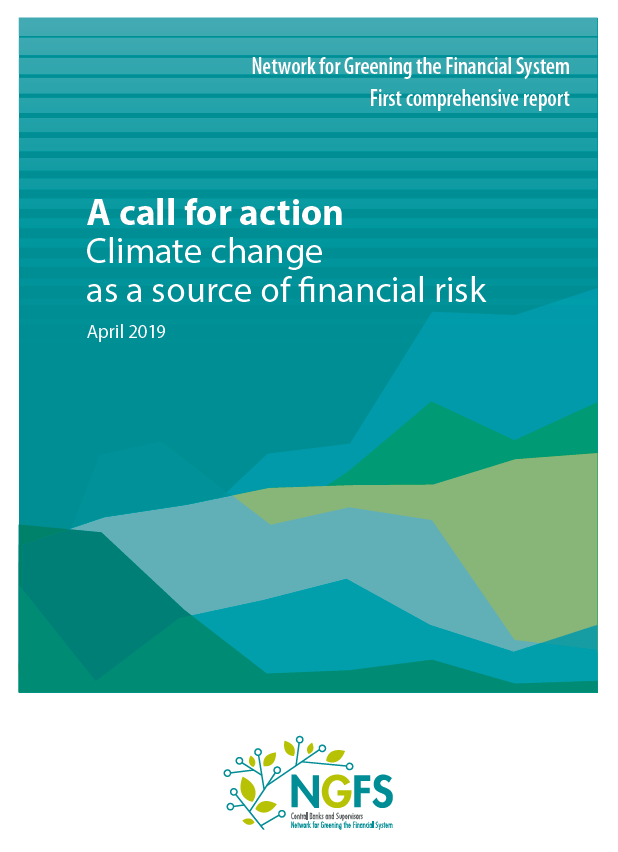NGFS releases first comprehensive report, and its growing on me

I’m in Paris in the spring, and I’ve got a choice seat next to Sean Kidney, at Banque de France the headquarters for the Central Banks and Supervisors 'Network for Greening the Financial System' (NGFS) conference.
Yes, you read right: central banks – 37 of them and growing – have joined together to green the financial system. Even Bundesbank and European Central Bank are members.
Hope
It’s almost four years since Bank of England Governor, Mark Carney, in his landmark September 2015 Breaking the Tragedy of the Horizon speech, warned about the dire financial risks posed by climate change.
And just two and a half years since Carney delivered a follow up: Resolving the Climate Paradox advocating building new markets in climate transition and green finance to help resolve climate risks.
Now, it's 37 central banks meeting in the heart of Europe.
The first report
As part of the conference, NGFS published its first comprehensive report: Climate Change as a Source of Financial Risk.
It’s an important step forward, essentially using the institutional heft of NGFS membership and a commitment to lead by example to pretty much instruct financial institutions to implement the Taskforce on Climate-related Financial Disclosure (TCFD) recommendations, amongst other things.
The report has six recommendations. Four are aimed at the central banking community itself and two at policy makers and the private sector.
It recommends Central Banks to:
- Integrate climate-risks into their monitoring and supervision activities.
- Implement them in their portfolio management. One thing this is likely to mean: buy green bonds!
- Bridge data gaps. Lots of data is held by government and not shared, especially around climate risk and detailed emissions.
- Supply technical assistance and share knowledge within the central banking community. In other words, help everyone else get up to speed. This was backed up in panel sessions by calls to support emerging market central banks.
For the policy makers and the private sector, it calls for:
- Robust and consistent disclosure of environmental risks, and;
- A taxonomy of green and brown assets. I’m glad they got that one in; given the vast amount of work we are currently doing supporting the development of the EU sustainable finance taxonomy!
My quick impression
Much of the material is uncontroversial. The specific reference to a taxonomy of “brown” assets based on clearly defined criteria was a little bit of a surprise, although we knew some central banks have been looking at that idea.
They also drove home the points that “brown assets “will be impacted by … low-carbon and climate-resilient transition”.
One could call that an understatement, but I guess that’s purple prose for central bankers.
They also recommended that central banks: “Consider applying capital measures …for firms that do not meet supervisory expectations or with concentrated exposures”.
For those companies that are slowest or simply unwilling to start the brown-to-green transition, the bankers are hinting at applying their own form of negative externalities.
The pivotal moment? Banque de France Governor François Villeroy de Galhau opening the conference by definitively saying “Climate change is within the mandate of central banks.”
Spring in Paris really is a joy!
Prashant Vaze,

